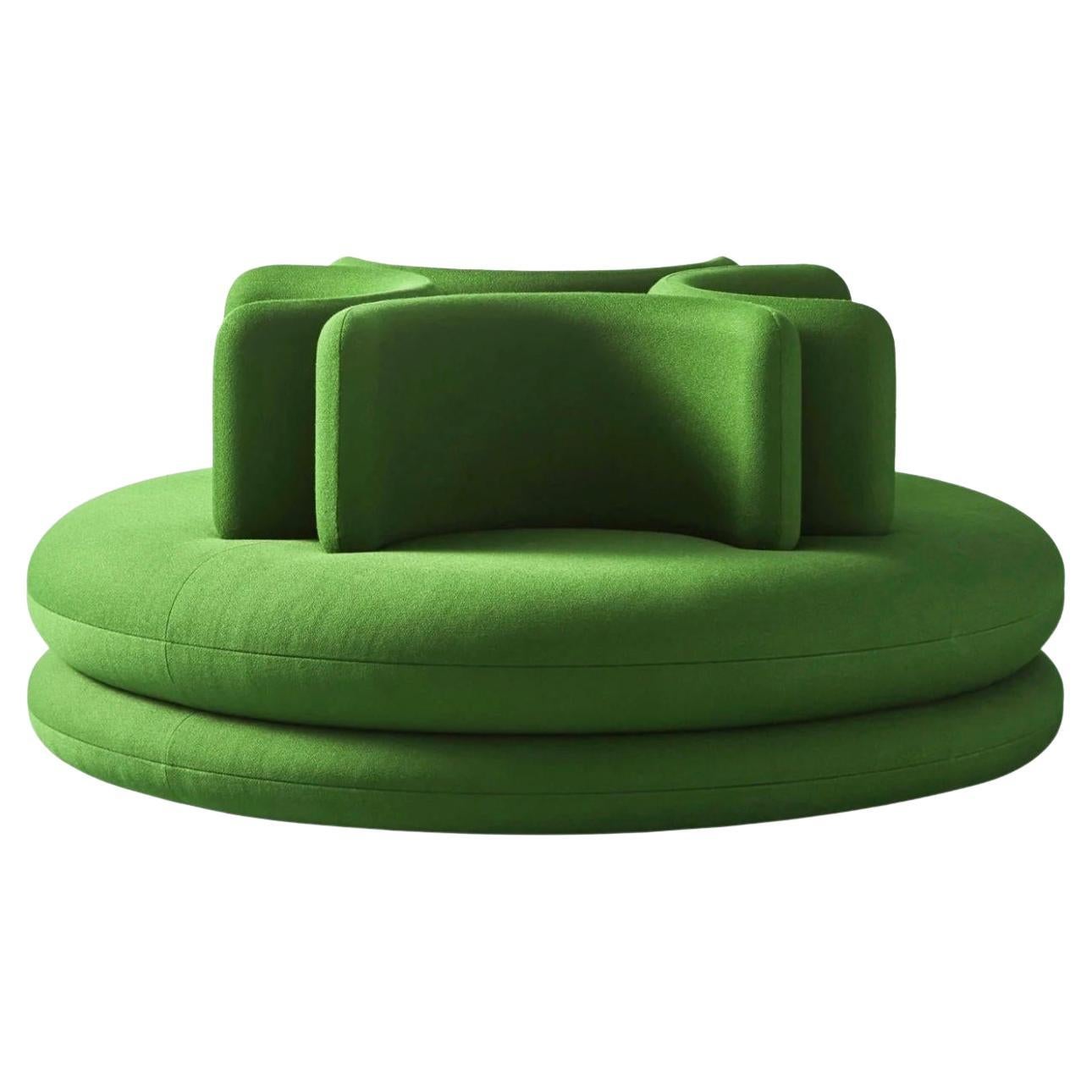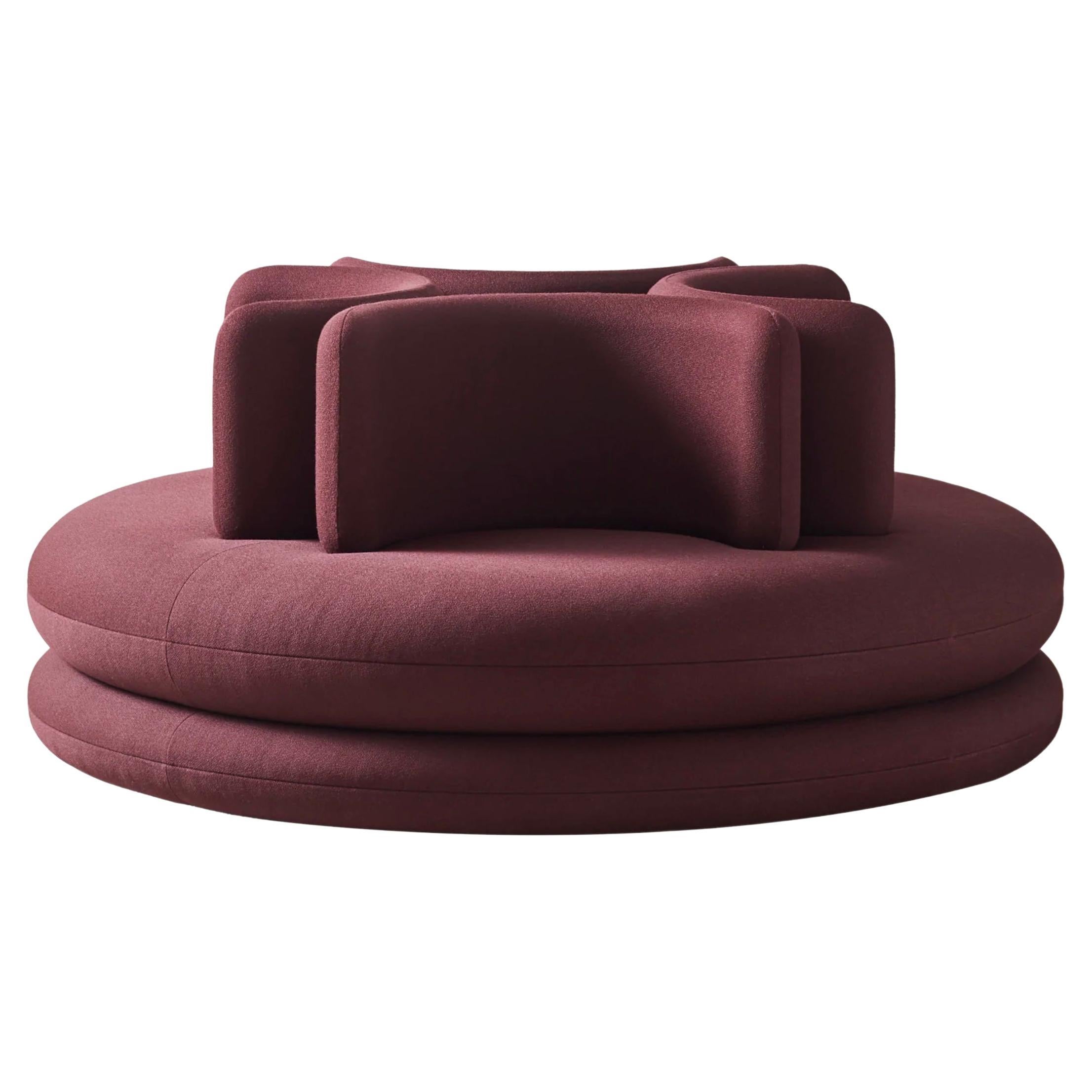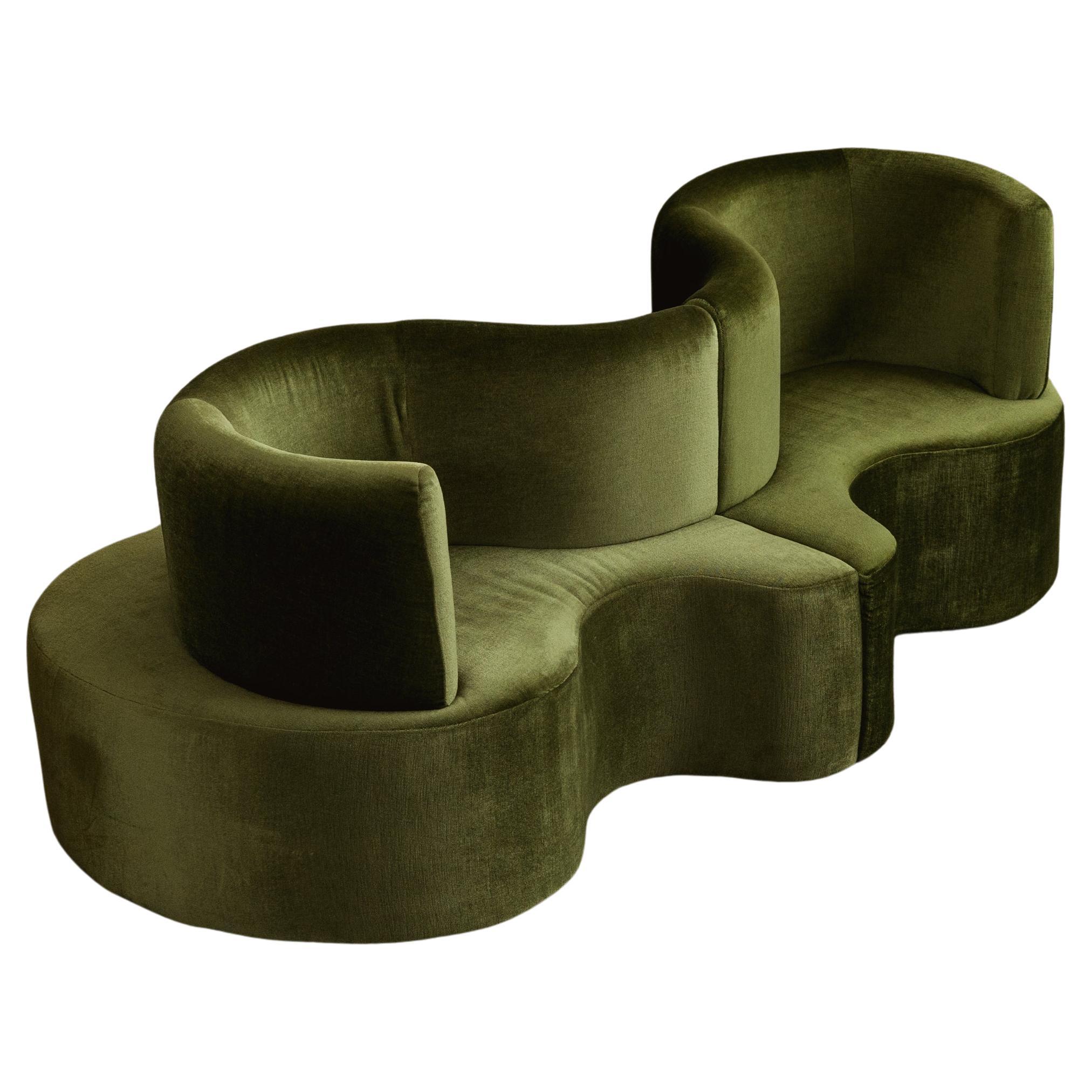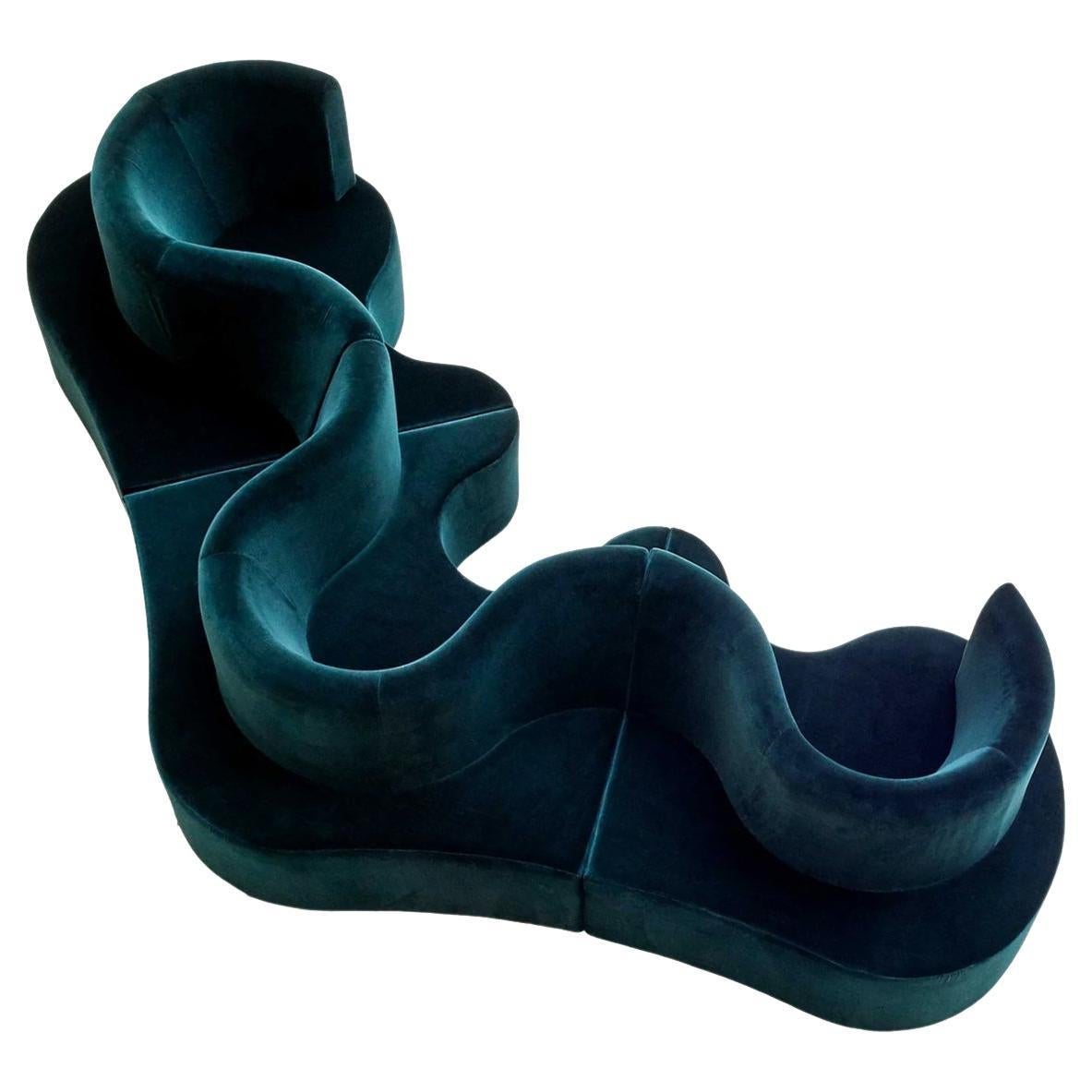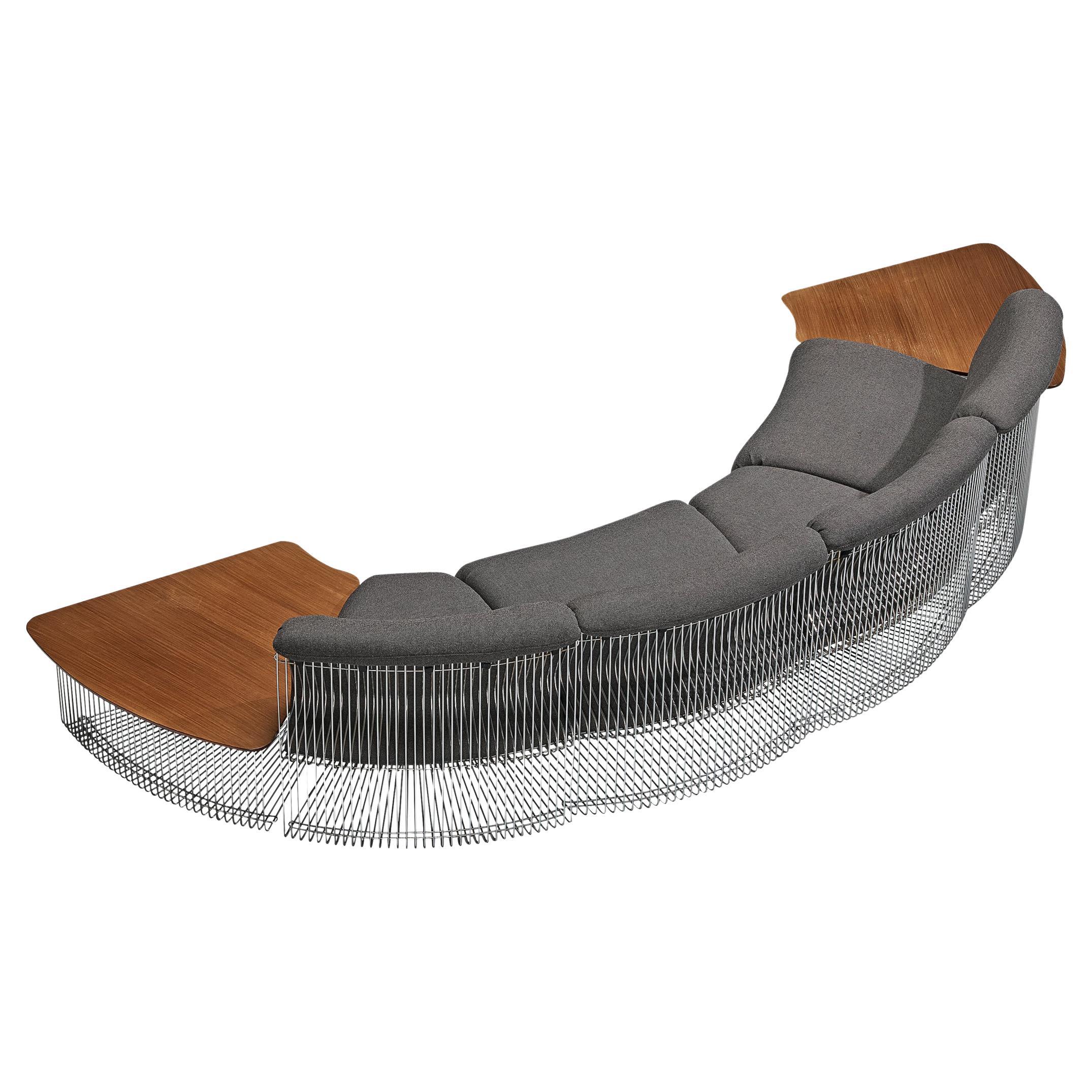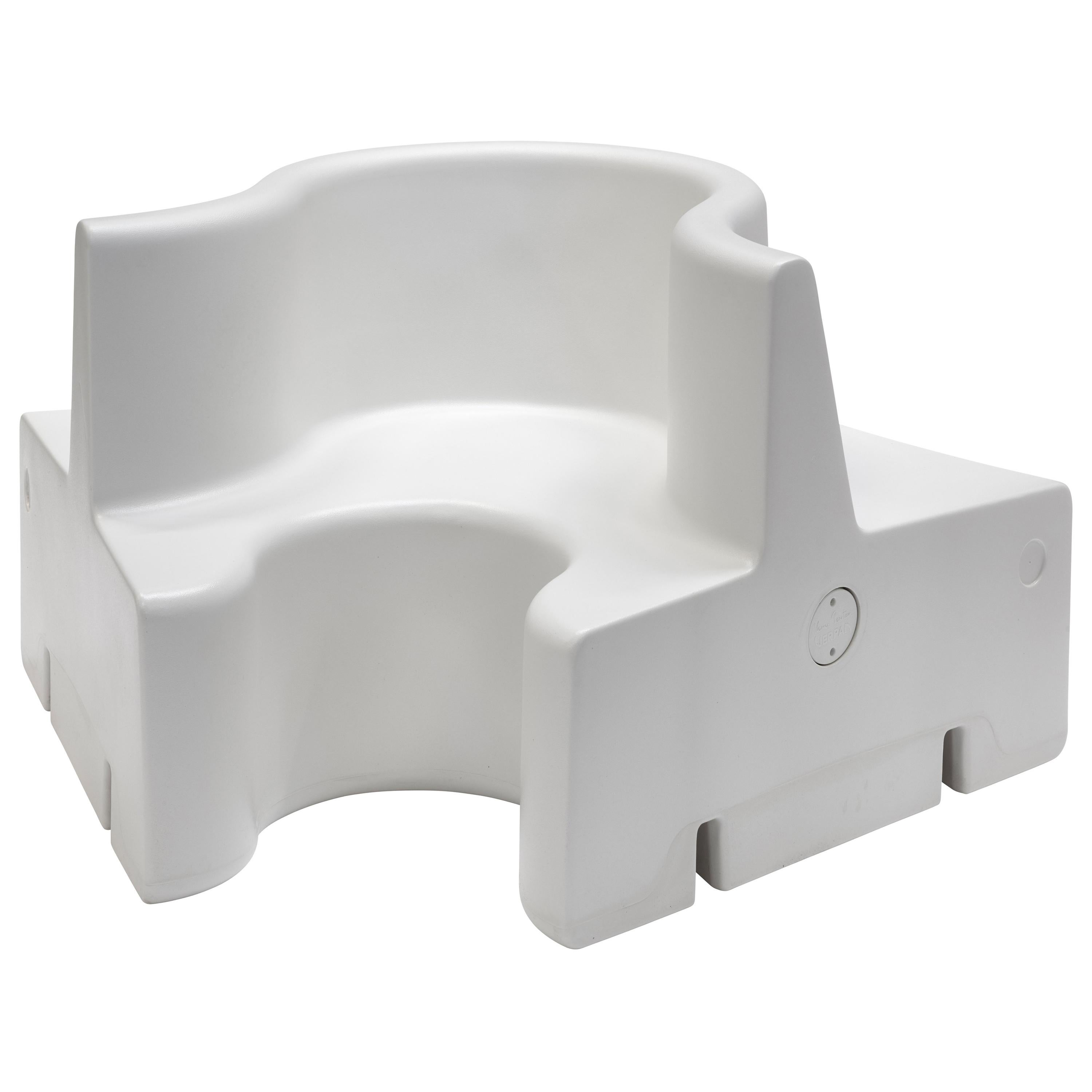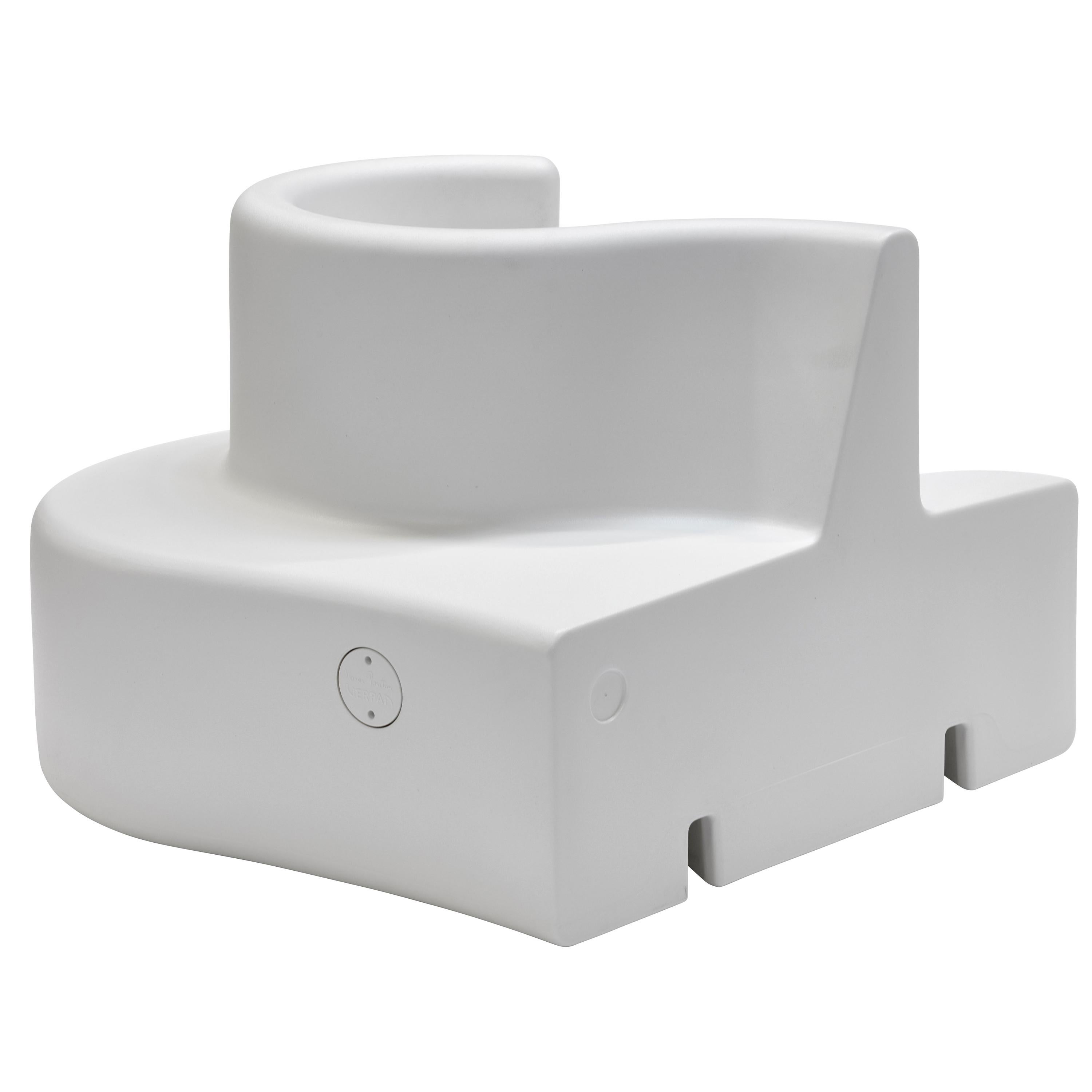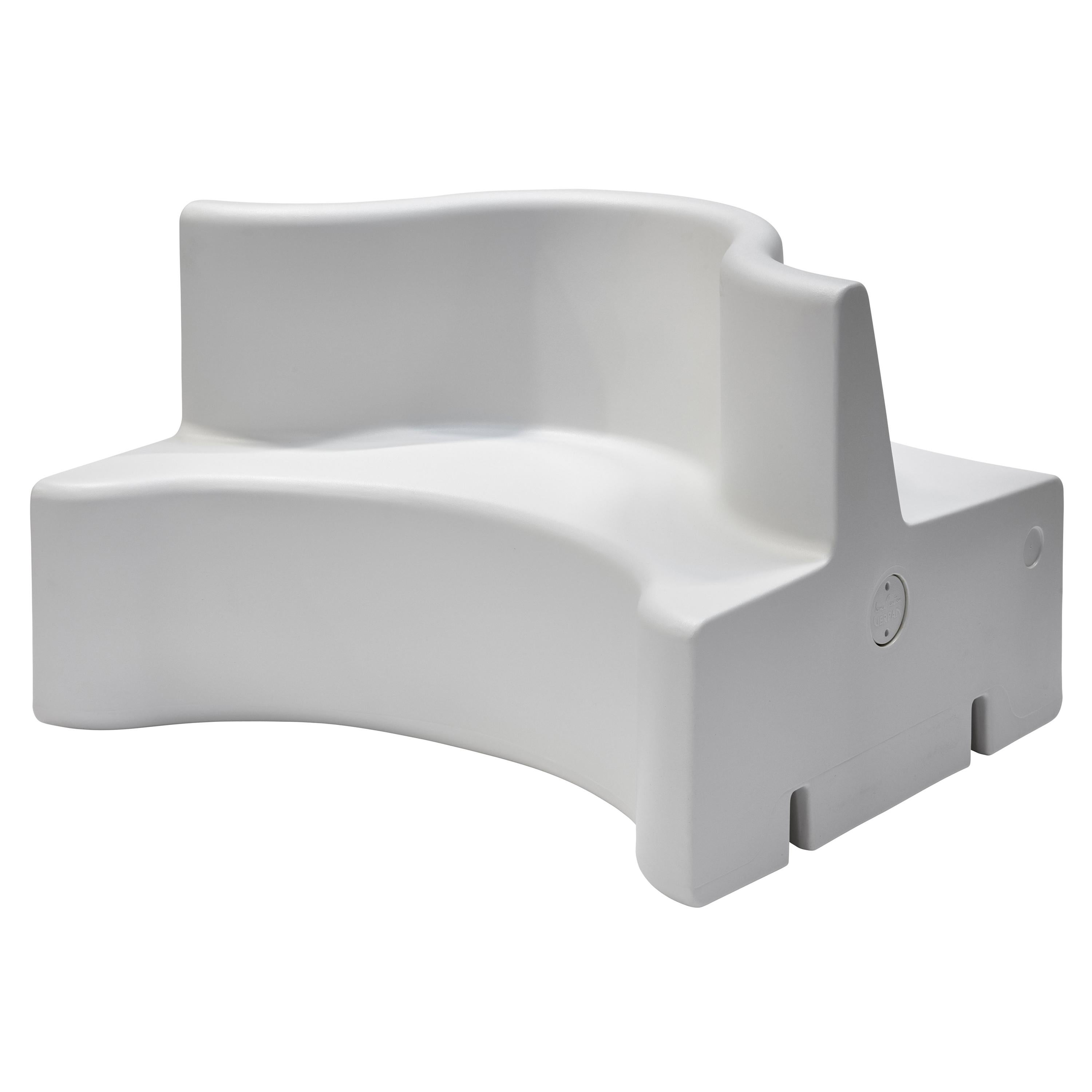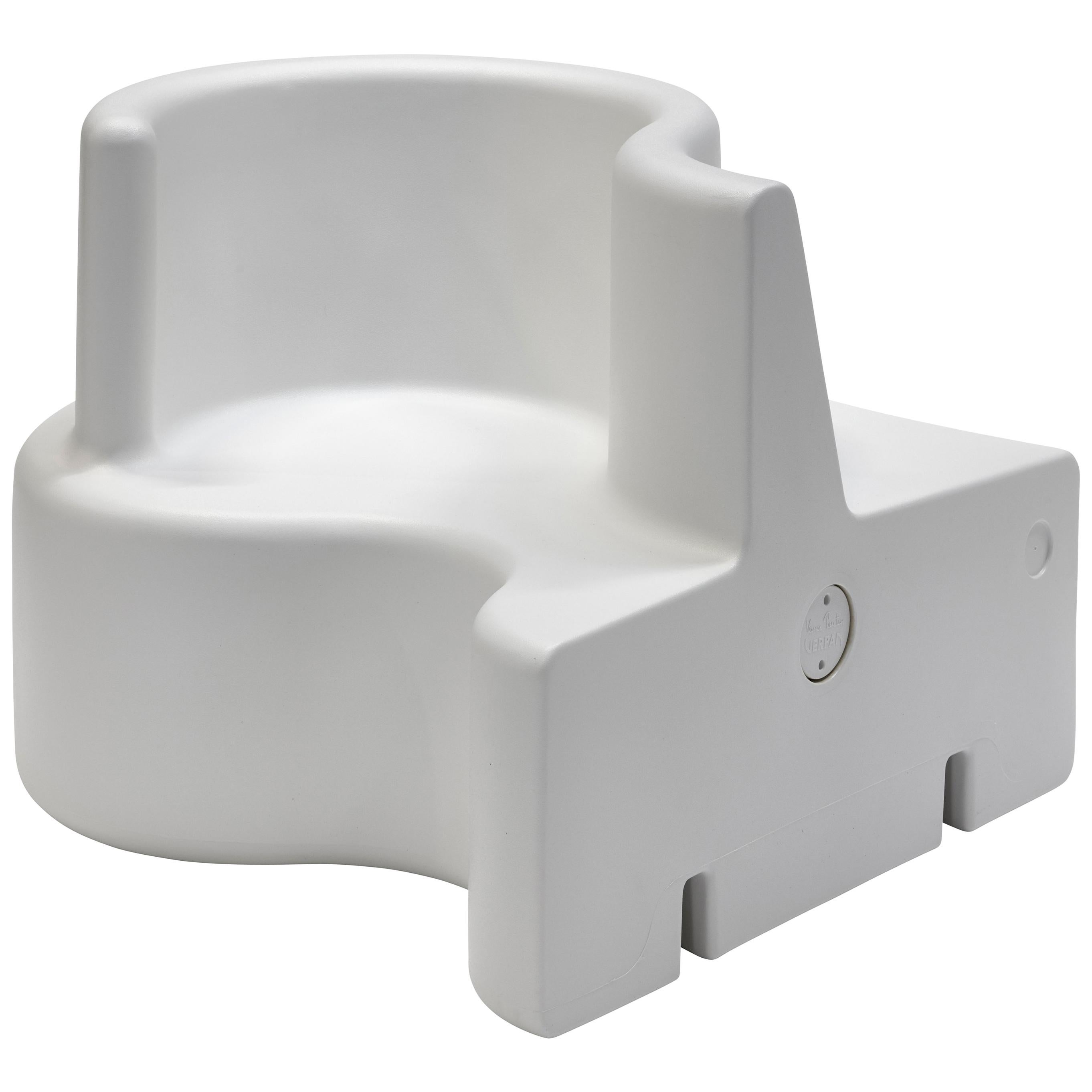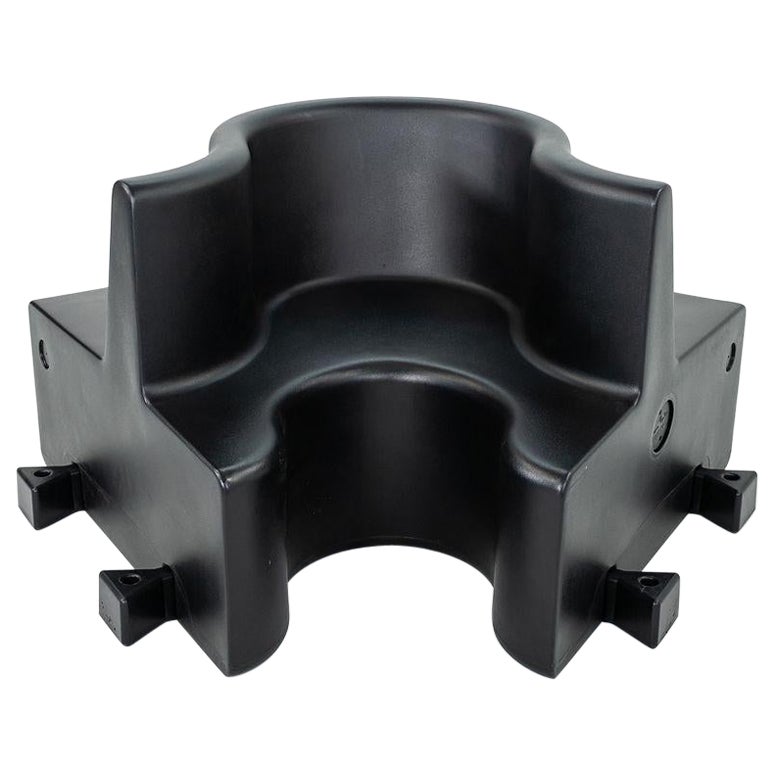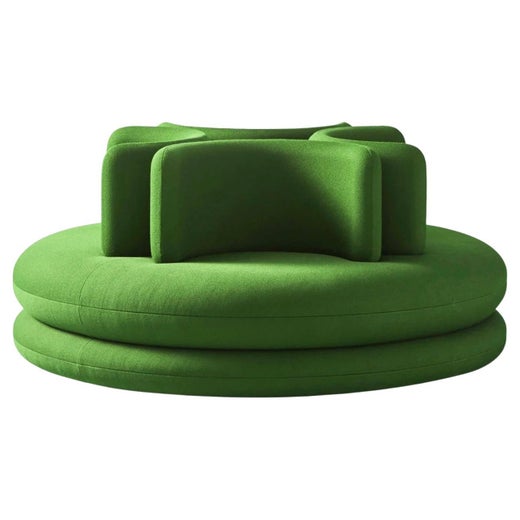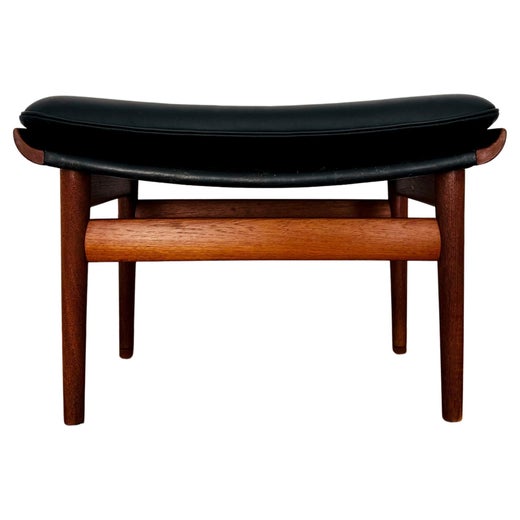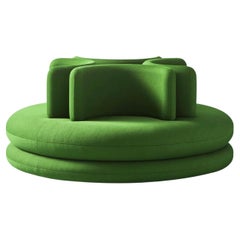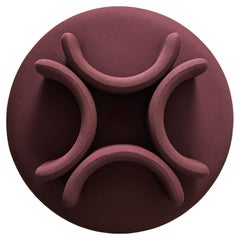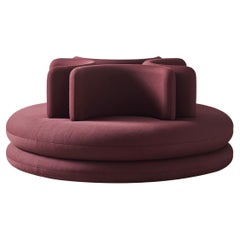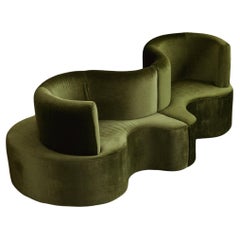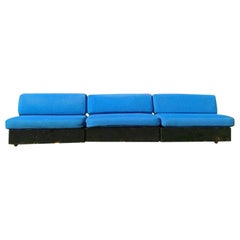
Verner Panton ‘Studioline’ Sofa
View Similar Items
Verner Panton ‘Studioline’ Sofa
About the Item
- Creator:Verner Panton (Designer),France & Søn (Maker)
- Dimensions:Height: 26.38 in (67 cm)Width: 39.38 in (100 cm)Depth: 26.38 in (67 cm)Seat Height: 15.75 in (40 cm)
- Style:Mid-Century Modern (Of the Period)
- Materials and Techniques:
- Place of Origin:
- Period:
- Date of Manufacture:1975
- Condition:Wear consistent with age and use. Minor fading.
- Seller Location:Mørkøv, DK
- Reference Number:1stDibs: LU7183229799912
Verner Panton
Verner Panton introduced the word “groovy” — or at least its Danish equivalent — into the Scandinavian modern design lexicon. He developed fantastical, futuristic forms and embraced bright colors and new materials such as plastic, fabric-covered polyurethane foam and steel-wire framing for the creation of his chairs, sofas, floor lamps and other furnishings. And Panton’s ebullient Pop art sensibility made him an international design star of the 1960s and ’70s. This radical departure from classic Danish modernism, however, actually stemmed from his training under the greats of that design style.
Born on the largely rural Danish island of Funen, Panton studied architecture and engineering at Copenhagen’s Royal Danish Academy of Fine Arts, where the lighting designer Poul Henningsen was one of his teachers. After graduating, in 1951, Panton worked in the architectural office of Arne Jacobsen, and he became a close friend of Hans Wegner's.
Henningsen taught a scientific approach to design; Jacobsen was forever researching new materials; and Wegner, the leader in modern furniture design using traditional woodworking and joinery, encouraged experimental form.
Panton opened his own design office in 1955, issuing tubular steel chairs with woven seating. His iconoclastic aesthetic was announced with his 1958 Cone chair, modified a year later as the Heart Cone chair. Made of upholstered sheet metal and with a conical base in place of legs, the design shocked visitors to a furniture trade show in Copenhagen.
Panton went on to successive bravura technical feats. His curving, stackable Panton chair, his most popular design, was the first chair to be made from a single piece of molded plastic.
Panton had been experimenting with ideas for chairs made of a single material since the late 1950s. He debuted his plastic seat for the public in the design magazine Mobilia in 1967 and then at the 1968 Cologne Furniture Fair. The designer’s S-Chair models 275 and 276, manufactured during the mid-1960s by August Sommer and distributed by the bentwood specialists at Gebrüder Thonet, were the first legless chairs crafted from a single piece of plywood.
Panton would spend the latter half of the 1960s and early ’70s developing all-encompassing room environments composed of sinuous and fluid-formed modular seating made of foam and metal wire. He also created a series of remarkable lighting designs, most notably his Fun chandeliers — introduced in 1964 and composed of scores of shimmering capiz-shell disks — and the Space Age VP Globe pendant light of 1969.
Panton’s designs are made to stand out and put an eye-catching exclamation point on even the most modern decor.
Find vintage Verner Panton chairs, magazine racks, rugs, table lamps and other furniture on 1stDibs.
France & Søn
Danish manufacturer France & Søn is best known for its prolific output of elegant mid-century modern furnishings in teak and leather, yet its multinational beginnings took shape during the 1930s.
After businessman Charles William Fearnley France (1897–1972) moved from his native England to Denmark in 1936, he began to operate a small mattress factory alongside his friend Eric Daverkosen, a Danish cabinetmaker, under the name France & Daverkosen. Shortly afterward, Daverkosen passed away, and when Denmark was invaded during the Second World War, Charles was captured and sent to a prison camp in Germany. When he was released, the British entrepreneur set out to produce furniture in the early 1950s, setting up a shop in Hillerød to manufacture the kind of sleek beech and teak goods that were gaining widespread acclaim around the world. In 1957, France’s son James joined the business, and the company changed its name to reflect the addition.
Throughout the ’50s and ’60s, France & Søn produced a stunning array — and staggering quantity — of designs, with elegant modernist lounge chairs and armchairs, teak and rosewood dining tables and other furnishings by the likes of Finn Juhl, Grete Valk, Ole Wanscher, Peter Hvidt and Orla Mølgaard-Nielsen all gracing its catalogues.
Even as there was a focus on mass production at France & Søn — and the brand doesn’t quite enjoy the same renown as fellow mid-century Danish furniture makers such as Carl Hansen & Søn — Charles France believed in making quality furniture, and the company’s offerings evoke the warmth of the handcrafted work that is typically associated with Scandinavian modernism.
In the 1960s, the company was bought by Danish designer Poul Cadovius, who folded it into the operations at CADO, a company he founded during the 1950s. Surviving examples of early work from the brand as well as modern icons by the likes of Verner Panton that followed in later years continue to be in demand.
Find a collection of France & Søn furniture on 1stDibs.
You May Also Like
21st Century and Contemporary Danish Scandinavian Modern Sofas
Fabric
21st Century and Contemporary Danish Scandinavian Modern Sofas
Fabric
21st Century and Contemporary Danish Scandinavian Modern Sofas
Fabric
2010s Danish Mid-Century Modern Sofas
Fabric
21st Century and Contemporary Danish Modern Sofas
Metal
21st Century and Contemporary Danish Mid-Century Modern Sofas
Fabric, Wood
Recently Viewed
View AllRead More
113 Chairs That Prove Danish Design Isn’t Limited to Denmark
In an innovative display, the Designmuseum Danmark is permanently exhibiting the 20th century's most iconic seats.
Verner Panton’s Bold Designs From the 1960s and ’70s Are Showing Up Everywhere
From high-fashion runways to a brand-new book, the groovy, futurist work of this groundbreaking Danish creative is receiving newfound — and much deserved — attention.
